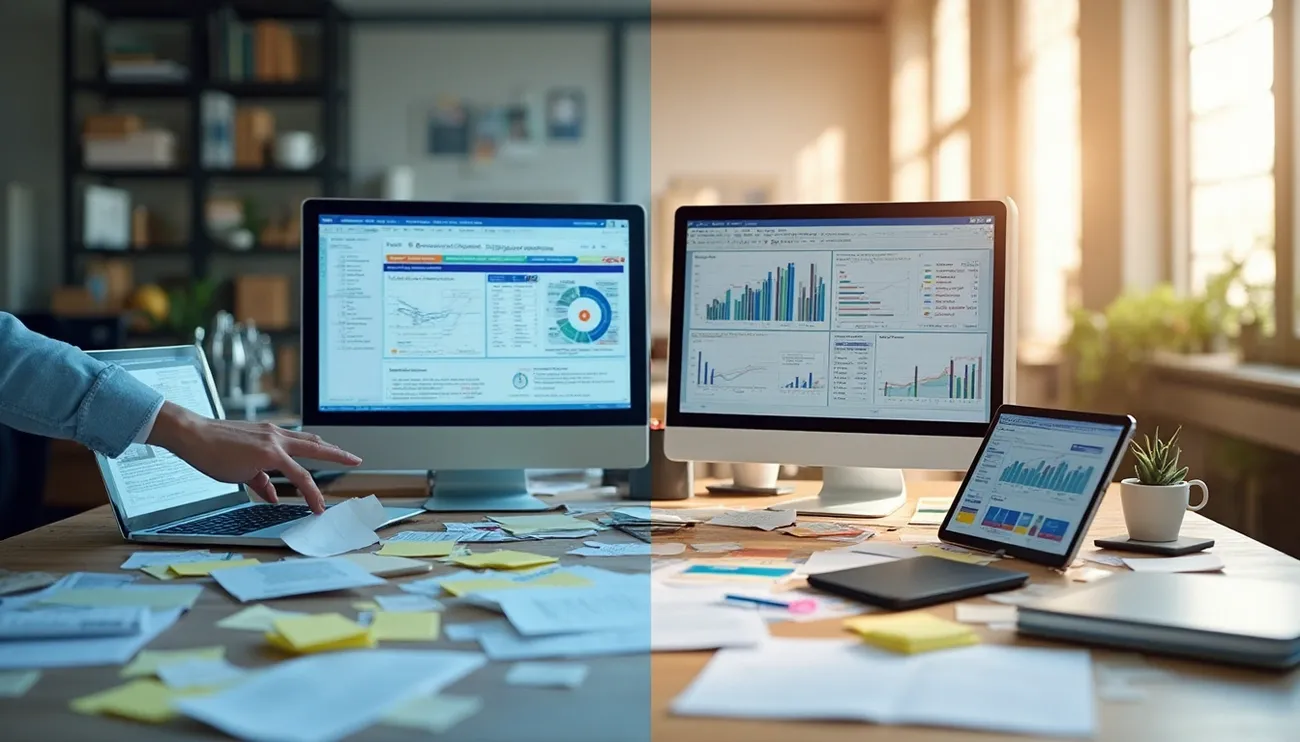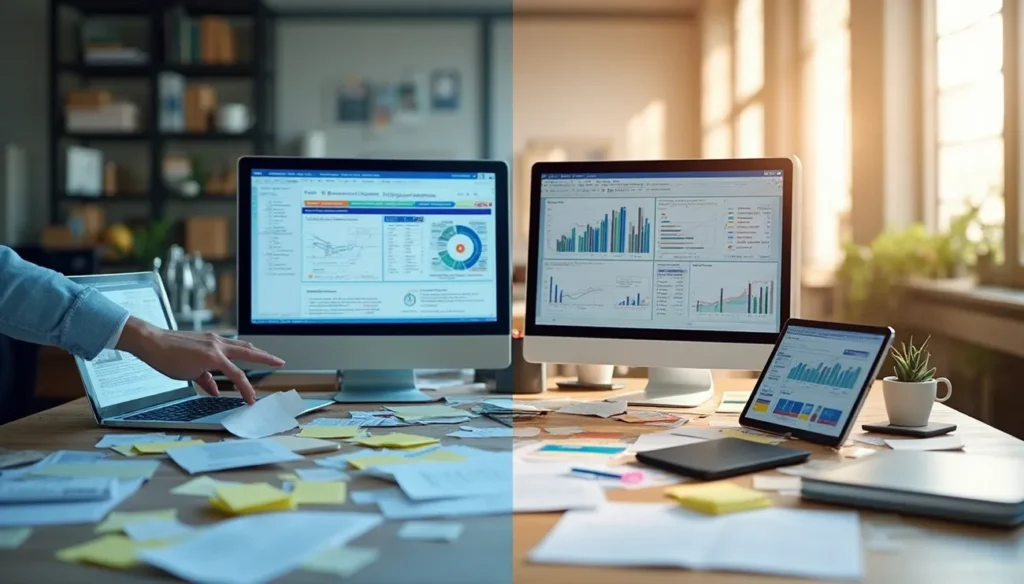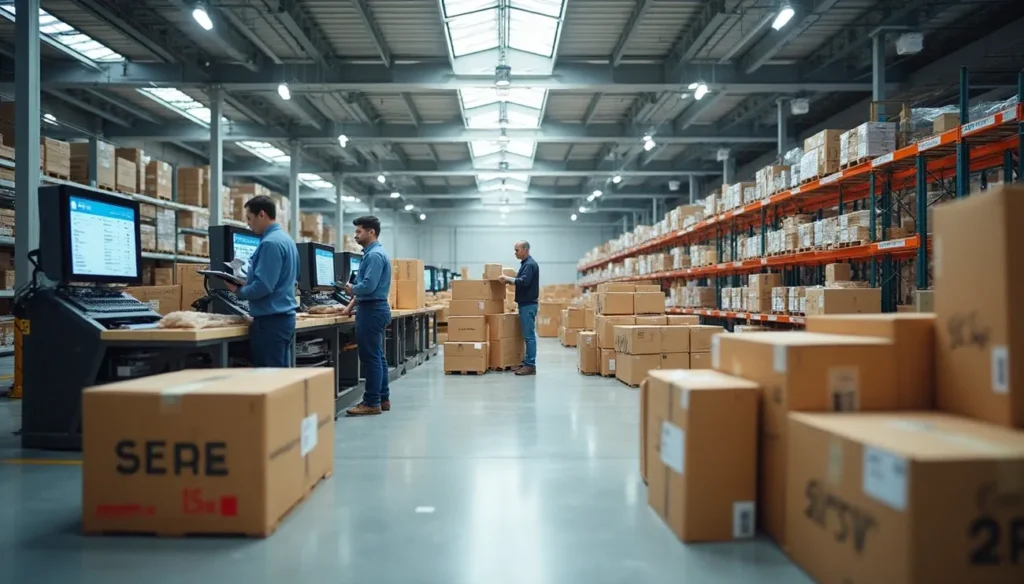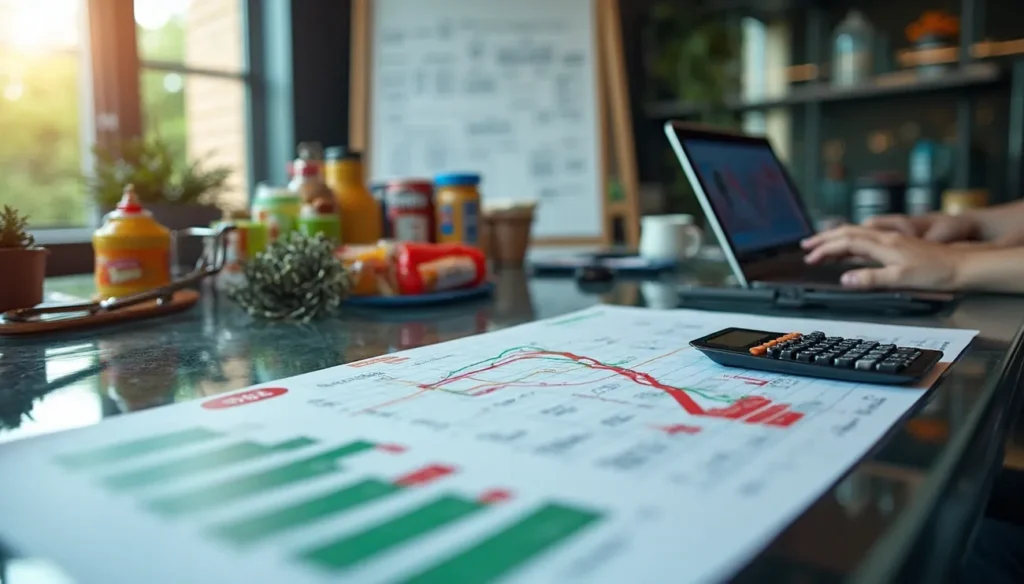Outgrown QuickBooks? Build the Right Accounting Tech Stack for Your CPG Brand

Your accounting tech stack might not handle your growing CPG brand’s needs anymore. QuickBooks works great for basic bookkeeping, invoicing, and expense tracking, but it often holds back faster growing businesses. Many organizations – about 66% – switched to more reliable solutions because QuickBooks couldn’t manage their complex accounting needs.
CPG brands face bigger challenges with QuickBooks. The software wasn’t built to handle manufacturing or distribution businesses. Its limited multi-entity capabilities and inter-company transaction features can slow down your growth. QuickBooks also falls short on Sarbanes-Oxley and SOC standards compliance, which could put your company at risk.
You’ll find several great alternatives today. The numbers speak for themselves – 93% of companies gained better visibility and control after moving away from QuickBooks. Another 80% made the switch to get better reporting and tracking features. This piece helps you build the right accounting tech stack for your growing CPG brand, whether you’re thinking over NetSuite, Sage Intacct, or learning about Finance as a Service options that save 20-40% compared to in-house teams.
Why QuickBooks Falls Short for Growing CPG Brands
QuickBooks works great for small businesses at first but starts to show its weak spots as CPG brands grow bigger. Let’s get into why this popular accounting software often becomes more of a roadblock than a helper for growing consumer packaged goods companies.
Limited multi-entity support
QuickBooks makes it really tough to manage multiple business entities. You need a separate paid subscription for each company, and there’s no built-in way to create combined reports across entities. CPG brands with different product lines or regional divisions end up with isolated data and face challenges to combine financial information manually. Controllers say “it was a nightmare” to log in and out of QuickBooks every time they needed to check a different entity. These limitations can stretch monthly closes up to 23 days. This makes it hard to make quick business decisions based on current financial data.
Lack of inventory and supply chain features
QuickBooks offers simple inventory tracking but falls way short for CPG companies with complex supply chains. The software only works well for businesses that keep inventory in one place. This creates big problems for brands using multiple warehouses. QuickBooks doesn’t have:
- Multi-location inventory management
- Advanced serial number and batch tracking
- Bill of materials functionality for manufacturing
- Raw material to finished goods conversion tracking
So CPG manufacturers must use third-party add-ons or do things manually, which costs more money and increases the chance of mistakes.
Manual workarounds and reporting gaps
Companies patch together solutions when QuickBooks can’t handle everything they need. Each new integration makes things more complex and raises costs in both subscriptions and upkeep time. The software’s limited reporting tools make it hard to see how your business is really doing. Finance teams waste hours moving data from QuickBooks to Excel to combine it. This slows down insights and decision-making.
Compliance and audit limitations
Growing CPG brands face stricter regulatory requirements. QuickBooks doesn’t fully meet Sarbanes-Oxley (SOX) or SOC1 and SOC2 standards, which could cause problems during audits. Users can change data without proper controls because of weak audit trails. This creates major compliance risks for government contractors or companies looking for investment funding.
The right accounting tech stack comes from understanding these QuickBooks limitations and finding solutions that can scale with your business.
What to Look for in a Scalable Accounting Tech Stack
Building an accounting tech stack is a vital foundation to your growing CPG brand’s future success. Your modern financial systems should tackle specific challenges that consumer goods companies face.
Multi-entity and multi-currency support
CPG brands need systems to manage multiple business entities as they grow. The best systems offer centralized financial data from multiple entities in one place to reduce errors and boost accuracy. These solutions automatically consolidate data using configurable rules for inter-entity transactions. Companies operating internationally need multi-currency support to work with different base currencies, handle flexible consolidation, and convert currencies automatically.
Real-time reporting and dashboards
Your financial performance should be visible instantly through modern accounting platforms. Real-time dashboards show live data from business platforms like CRM and ERP. A McKinsey study shows executives use 40% of their time making decisions, which makes quick data visualization significant. The best dashboards display relevant information through graphs and charts that you can understand at a glance.
Integration with inventory and CRM systems
The right connections between systems make good tech stacks great. Your CRM and accounting software integration streamlines invoicing and administrative processes through automation. This helps trace revenue back to specific sales conversations and marketing activities easily. The inventory management integration shows stock availability and tracks it live.
Automation of AP/AR processes
Automated accounts payable/receivable systems remove routine tasks so your team can focus on business priorities. A 2021 Levvel Research survey revealed all but one of these respondents still input invoice information manually. AP automation extracts information from digital bills, matches purchase orders to vendor bills, and confirms delivery receipt. AR automation handles invoices, sends payment reminders, and resolves payments received.
Scalability and cloud deployment
Your tech stack should expand with your business. Cloud-based systems let you access financial data from anywhere. Oracle NetSuite users report that automation through cloud systems cut data entry errors by 40% and sped up financial closing processes by 30%. Pick solutions that offer tiered functionality which grows with your organization.
Top Accounting Tech Stack Tools for CPG Brands
Your accounting tech stack for CPG operations depends on choosing the right financial software. Here are the top solutions that work well for consumer goods brands as they grow.
1. NetSuite – Best for end-to-end ERP functionality
NetSuite gives CPG distributors and manufacturers clear visibility from components to finished goods. The platform unites core functions with real-time data across sales channels. This includes B2B EDI, eCommerce, and in-store POS that enable businesses through role-based dashboards.
2. Sage Intacct – Ideal for SaaS and multi-entity accounting
Sage Intacct makes inter-entity transactions simple through centralized setup with its multi-entity features. Teams can create new entities within minutes without IT help. The platform manages consolidated reporting across hundreds of entities and reduces close time.
3. Microsoft Dynamics 365 – Great for Microsoft ecosystem users
Microsoft Dynamics 365 blends naturally with Office 365 and reduces training costs. The system handles complex design elements like color and size variations that CPG brands need. It also supports global operations with multiple currencies and compliance standards.
4. Xero – Simple and adaptable for small CPG brands
Xero offers user-friendly cloud-based accounting that small CPG operations need. Small businesses in Australia trust Xero, with over 50% using it. The platform excels in cash flow management, customizable reporting, and connects easily with inventory systems.
5. Zoho Books – Budget-friendly with automation
Zoho Books users can build workflows where rules trigger automated actions. These include email alerts, field updates, and notifications. Custom functions help automate specific tasks like extending payment terms for regular customers or adding seasonal discounts.
6. Certinia – Best for Salesforce users
Certinia (formerly FinancialForce) builds directly on Salesforce CRM and shares customer records. This connection optimizes opportunity-to-cash processes. Users can create accurate invoices the first time and see customer standings instantly.
7. Acumatica – Flexible ERP for manufacturers
Acumatica supports various manufacturing modes including batch process manufacturing vital for CPG. Food and beverage distributors benefit from its expiration date management tool that uses First Expired, First Out (FEFO) picking logic to reduce waste.
8. SAP Business ByDesign – Enterprise-grade for global CPGs
SAP Business ByDesign combines pre-built processes for finance, sales, product management, and purchasing on one platform. The system works in over 160 countries with multi-national features and local compliance capabilities.
9. Consero (FaaS) – Fully managed finance solution
Consero provides Finance as a Service and handles transactions while you focus on strategy. Clients get monthly financials faster (in 5-10 business days) and save money compared to traditional in-house finance teams.
How to Choose and Implement the Right Tools
Moving from legacy systems to a modern accounting tech stack needs careful planning and execution. Your success depends on thorough preparation rather than rushing to buy new software.
Assess your current and future needs
Your business direction over the next three to five years needs a thorough review. A detailed map of existing business processes will show bottlenecks and inefficiencies. This analysis reveals the essential functionality needed from your new system. Build a priority list of requirements by asking:
- Directors and business owners about strategic priorities
- Finance team members about daily operational needs
- Sales and inventory managers about integration requirements
“Take time to test whether your current accounting software meets your needs, and compare it with competitor products every few years”.
Map out your tech stack architecture
Building a modular architecture supports multiple business functions effectively. Cloud-based systems give you better flexibility, live access, and team features without the heavy costs of server purchases. Heavy customization creates maintenance risks and increases training costs, so avoid it. Standard functionality adapts better to your growing business needs.
Think about integration and data flow
Your tech stack for accounting should work as a connected ecosystem. Standard APIs and robust data pipelines ensure information reaches the right systems. CPG companies often face challenges with scattered data from retailers, distributors, and partners. Your accounting system needs smooth integration with:
- Inventory management systems
- CRM platforms
- E-commerce channels
- Banking and payment processors
Plan for implementation and training
Implementation works best in manageable phases rather than all at once. Data cleanup before migration helps – import only active customers instead of your entire historical database. Complete training should include:
- Role-specific workshops
- Documentation of new processes
- Regular check-ins during transition periods
Work with an accounting firm or tech partner
Specialized firms with CPG industry knowledge make excellent partners. These experts understand inventory turnover, retailer compliance, and SKU profitability. Accountfully reports that “hundreds of CPG businesses rely on us as their long-term accounting partner” for specialized services like inventory management and distributor deductions. The right partner sets up systems that match your CPG operations perfectly.
Conclusion
Build Your Future-Proof Accounting Foundation
Moving beyond QuickBooks marks a key milestone in your CPG brand’s experience. This transition shows your company’s success as it grows into larger operations. This piece explores why QuickBooks eventually holds back growing consumer goods companies and what other options can support your expansion.
The right accounting tech stack will revolutionize how you understand your business. Your finance team can focus on strategic guidance rather than getting stuck with spreadsheet work and disconnected systems. Companies making this switch see 93% increased visibility across operations and close their books much faster at month-end.
Start by taking a hard look at your current challenges and future needs. CPG brands need strong inventory tracking, multi-entity features, and uninterrupted connections between sales channels and financial systems. Solutions like NetSuite and Sage Intacct offer solid advantages to mid-market companies looking for detailed functionality.
Cost remains a key factor for many businesses. Zoho Books and Xero offer economical starting points with expandable features. On top of that, Finance as a Service providers like Consero deliver enterprise-grade capabilities without needing a large in-house team.
Success in implementation depends on good planning and choosing the right partner. Most CPG companies find that specialized accounting firms reduce transition risks and ensure industry-specific needs get proper attention.
Note that accounting technology should serve your business strategy, not control it. The best tech stack grows with your company and adapts to market changes without needing a complete overhaul. Your financial systems should enable rather than limit your growth goals.
Start your tech stack evaluation with a full needs assessment. Follow up with targeted vendor demos that focus on your specific requirements. This step-by-step approach helps you avoid mistakes that get pricey and ensures your new financial foundation supports your CPG brand’s success over the next several years.





